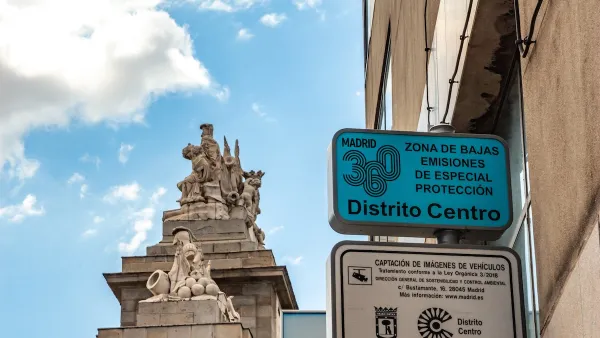Nate Berg says that planners have a crucial role in making sure cities are prepared for natural disasters.
Hazard mitigation necessitates the consideration of the city's social capacity to sustain its citizens immediately following a disaster. Berg states that in order for a city to really be prepared for a disaster like a hurricane or an earthquake, you need to have a safety net of local social services such as emergency care and food and water supplies:
"A city with old buildings that has a strong network of neighbors and an efficient emergency services system will be at less risk of overall damage from an earthquake compared to a city with the same old buildings but none of the social networks or emergency services," writes Berg.
Researchers from the Polytechnic University of Catalonia in Spain argue that cities must plan beyond the physical structure of the city and consider the basic needs of the population by assessing "the number of hospital beds nearby, the training level of hospital staff, the preponderance of marginalized neighborhoods, and rates of crime."
By preparing for events that occur after the disaster, planners can better serve cities and communities by helping them to recuperate. Just as architects build beams to support buildings, planners must organize a social support system to allow for people to carry on after a disaster.
FULL STORY: The Social Side of Urban Earthquake Risk

National Parks Layoffs Will Cause Communities to Lose Billions
Thousands of essential park workers were laid off this week, just before the busy spring break season.

Retro-silient?: America’s First “Eco-burb,” The Woodlands Turns 50
A master-planned community north of Houston offers lessons on green infrastructure and resilient design, but falls short of its founder’s lofty affordability and walkability goals.

Delivering for America Plan Will Downgrade Mail Service in at Least 49.5 Percent of Zip Codes
Republican and Democrat lawmakers criticize the plan for its disproportionate negative impact on rural communities.

Test News Post 1
This is a summary

Test News Headline 46
Test for the image on the front page.

Balancing Bombs and Butterflies: How the National Guard Protects a Rare Species
The National Guard at Fort Indiantown Gap uses GIS technology and land management strategies to balance military training with conservation efforts, ensuring the survival of the rare eastern regal fritillary butterfly.
Urban Design for Planners 1: Software Tools
This six-course series explores essential urban design concepts using open source software and equips planners with the tools they need to participate fully in the urban design process.
Planning for Universal Design
Learn the tools for implementing Universal Design in planning regulations.
EMC Planning Group, Inc.
Planetizen
Planetizen
Mpact (formerly Rail~Volution)
Great Falls Development Authority, Inc.
HUDs Office of Policy Development and Research
NYU Wagner Graduate School of Public Service





























